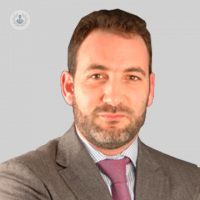Problemas maxilofaciales más comunes
Written by:The most common problems in the field of Oral and Maxillofacial Surgery are those related to the pathologies of the oral cavity and facial structure.
Frequent applications of oral surgery
Many frequent maxillofacial problems are those that are treated with oral surgery, such as dentoalveolar disease, which requires dental inclusions, bone regeneration of the maxillary and mandible alveolar bone to place dental implants, and surgical treatment of partial or complete edentulism.
Also frequent are oral medicine consultations, which include lesions of the mucous membranes of the mouth such as cancer of the oral cavity; As well as the benign pathology of the salivary glands which are the sublingual gland, the submaxillary, the parotid and the minor salivary glands, and the temporomandibular joint pathology .
Common Problems of Maxillofacial Surgery
Consultations on dentofacial anomalies and dental occlusion are common in the field of maxillofacial surgery. This pathology refers to the lack of harmony between the maxilla and the mandible and causes problems that are known as prognathism, pseudoprognatism or hypoplasia of the maxilla, as well as asymmetries between the jaws and excess or deficit in the projection of the chin. Symptoms of maxillofacial problems The symptoms of problems in oral surgery include inflammation due to alterations in the dental eruption, as well as functional problems due to the absence of dental pieces and the temporomandibular joint.
Dentofacial anomalies cause aesthetic problems in the facial structure, such as mandibular prognathism due to a too large jaw, a deficit in the projection of the lip, nose and the middle facial third by a small jaw, as well as occlusal problems such as open bite By the lack of contact of the teeth of the anterior front of the maxilla and the mandible.
It is also frequent to see asymmetries in the form of the chin and the jaw that are susceptible of treatment by maxillofacial surgery.

Surgical treatment of maxillofacial problems
The usual management of maxillofacial problems is surgical. Oral surgery can be a simple, quick and painless procedure such as surgery for placement of dental implants and dentoalveolar surgery. These can be performed under intravenous sedation in addition to local anesthesia, can be performed with greater comfort and better postoperative for the patient.
Today it is possible to perform virtually any oral surgery treatment with great quality, comfort and precision in the results, thanks to advances in surgery and new technologies.
In treatments in maxillofacial surgery, including dentofacial anomalies, orthognathic surgery, sequelae of facial trauma and more complex surgeries such as oral cancer, maxillofacial reconstructive surgery and temporomandibular joint problems, general anesthesia is used. These treatments usually require hospitalization.
Age to undergo oral and maxillofacial surgery
For elective procedures, that is, benign pathologies that do not affect the prognosis of the pathology, surgery can be performed when it is present or is more convenient for the patient.
In pathologies that require multidisciplinary management with professionals in orthodontics, such as dentofacial anomalies, it is advisable to treat them after growth, since previously, in some cases, they can be resolved with orthodontics and facial orthopedics.
Treatments in orthognathic surgery are recommended between the ages of 18 and 35, since the younger the patient, the faster their recovery will be and facial problems that may affect their development will be solved.. However, it is not uncommon to treat patients over 35 years of age who had not previously considered this treatment, either due to lack of knowledge or inadequate prior diagnosis.For dental rehabilitation with dental implants, these can be performed at any age after the end of growth. This pathology is usually present in older patients with a higher degree of edentulism. The treatment requires the participation of a dentist who specializes in prosthodontics, who will be responsible for the rehabilitation with dental prostheses on dental implants performed by the oral and maxillofacial surgeon.
Other pathologies such as dental inclusions, third molars, including canines or supernumerary teeth, should be performed before they present pathology and within a comprehensive oral health treatment plan in which the participation of the dentist and the orthodontist is very important.
Non-elective pathologies such as congenital pathology, facial traumatology, cervicofacial infectious pathology, or maxillofacial oncological pathology should preferably be handled when diagnosis or suspected diagnosis is made by a qualified specialist in maxillofacial surgery.


